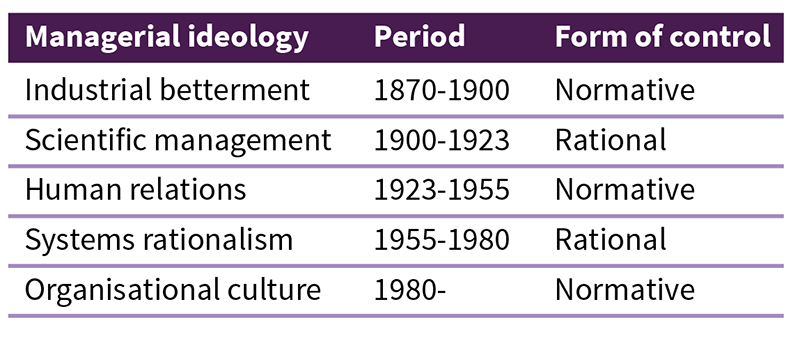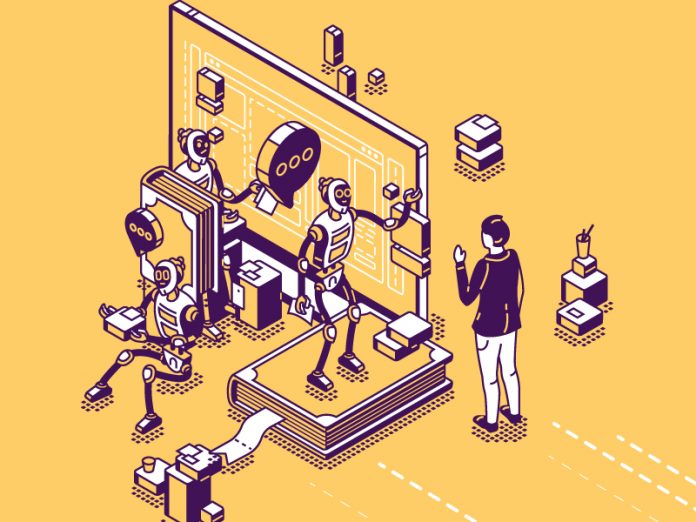The recent transitions towards having company personnel working at home while remaining digitally connected have sometimes been portrayed as furthering the ideal of empowering employees. But is one person’s empowerment another’s control? Andreas Deppeler considers whether this transformation has merely served as a channel for the increased application of people analytics.
In 2020, hundreds of millions of office workers deserted their employers’ premises and installed themselves at makeshift desks in their homes. Many are still there. Workplace closure measures remain in effect in most parts of the world.1 In the European Union, more than 40 percent of the labour force have been working from home full-time. In a survey conducted by Eurofound, an agency of the EU, 44 percent of respondents said they would like to continue working from home daily or several times a week, if given the choice.2 Some observers estimate the global share of permanent remote workers to reach 34 percent in 2021.3
Remote working is not a new idea. Firms in the financial and professional services sectors have been consolidating, compressing and reducing office space for almost twenty years in an attempt to lower costs. In 2020, technology firms, which provide the information and communication tools that make flexible workplace models possible, were among the first to advocate a continuation of the practice. In May, the CEO of Twitter told staff that they would be allowed to work from home “forever”. More recently, Microsoft’s guidance to employees stated that “we view working from home part of the time (less than 50%) as now standard.”4
How Management Remains in Charge
How does management remain in control of a workforce that is increasingly dispersed across geographies, locations and time zones? Most reports and proposals drawn up in 2020 by corporate marketing departments and consultancies convey a view that flexibility and agility must prevail over the rigidity and hierarchy of yore as businesses transition to the “next normal” or the “new now” of a post-COVID-19 world. McKinsey, for example, recommends that organisations “develop a culture that empowers people… rather than returning to central control and rigid processes.”5 By creating “networks of teams with clear, flat structures”, the authors argue, “agile organisations” become more resilient against recurrent crises.
This uplifting narrative of “empowering people” stands in stark contrast to another phenomenon that has been making headlines in recent years: monitoring employees through technology, also known as “people analytics”. A recent Harvard Business Review article describes people analytics as “the pursuit of data-driven insights about an organisation’s workforce”. Digital records about employee behaviour, collected from devices and sensors, are translated into “actionable insights”, with the ultimate aim of making organisations “more evidence-based, talent-centric and meritocratic” and thus “more effective”. 6
According to a recent report, most large organisations have built up people-analytics capabilities in the last decade, with 70 percent of executives viewing it as a top priority.7 2020 has undoubtedly been a good year for selling employee-monitoring software. Some vendors have seen their sales triple.8 In addition, as organisations prepare to send staff back to offices, shops and factories, a new and potentially lucrative market for workplace re-entry and monitoring tools is emerging. IBM’s “Maximo Worker Insights” solution, for example, uses artificial intelligence (AI) to process real-time data from “cameras, Bluetooth beacons, mobile phones, IoT wearable devices and environmental sensors” and turn them into predictions that allow supervisors to “address issues and violations before they become problems”.9 AI thus promises to fulfil a long-held dream of authoritarians: to predict and prevent transgressions of the established order before they happen.
A Long History of Surveillance and Control
We are thus faced with a paradox. Companies publicly promote agility and empowerment while covertly building a sophisticated surveillance apparatus. How do we explain and resolve this contradiction?
In a paper published in 1992, Stephen Barley and Gideon Kunda identified five consecutive waves of managerial ideology in the United States since 1870 (see Table 1).10

In these waves, managerial discourse alternates between ideologies of normative and rational control. Normative control rests on “shaping workers’ identities, emotions, attitudes and beliefs” through moral authority, welfare, employee relations, cultural change and the collective. It is generally associated with research areas like organisational behaviour and applied psychology. Rational control ideologies, in contrast, are influenced by engineering, operations research, statistics and accounting. They emphasise structure, technology, quantification and computation. The archetype of an ideology of rational control is, of course, Frederick Taylor’s “scientific management” philosophy (1911). More recent examples include Peter Drucker’s “Management by Objectives” (1954) and Robert Kaplan and David Norton’s “Balanced Scorecard” (1992).
Extending Barley and Kunda’s analysis to our present time, Phoebe Moore has postulated that in around 2001 we entered an era of “agile management systems”, characterised by constant change, technological fetishism, algorithmic management, intensifying workloads and stagnating incomes. The associated managerial discourse combines normative elements (for example, exhorting workers to upgrade their skills to stay relevant in a world of technological “disruption”) with persistent rational control through data extraction and analytics. Workers are told that “they have agency and that they can and should take full control of their work, personal lives and wellbeing”, while at the same time being “surveilled, measured and quantified at increasingly intimate levels”.11
The contradiction between empowerment and control that we identified is thus perfectly compatible with historical managerial ideologies and practices. There is nothing unusual or new about firms professing to empower their employees while subjecting them to surveillance and quantification. Starting with Taylor and continuing throughout the 20th century, this meant separating conception (thinking) from execution (doing) and putting the former into the hands of a growing cadre of professional managers. In the last thirty years, advances in information and communication technology have allowed organisations to standardise and codify knowledge work, thereby strengthening management’s control over an increasingly globalised labour process.12
Logic and Limits of Contemporary Employee Surveillance
21st century people analytics goes beyond traditional procedures to measure and quantify the performance of individual workers in two ways: by collecting large, unstructured, real-time data (“big data”) and by converting aggregated data sets into statistical predictions through AI. There are obvious similarities between the business models of people analytics and social media platforms. Both intend to shape behaviour towards maximum compliance and profitability. This is because, in the words of Shoshana Zuboff, “it is no longer enough to automate information flows about us; the goal now is to automate us.” 13
To be clear, this extraction and behavioural modification logic of people analytics applies not just to rank-and-file staff but to management as well, all the way to the executive board. In an era of unquestioning belief in the objectivity of data and the superiority of AI, nobody is exempt from being quantified and commodified. Harold Wilensky was quite correct when he predicted, in a 1960 paper, that “[t]he men who once applied Taylor to the proletariat would themselves be Taylorized.”14
All of this is not to say, however, that there are no limits to workplace surveillance. Increased adoption of people analytics by firms is bound to raise questions of effectiveness and legality. It will also likely be resisted by workers.
1. Effectiveness
After attracting considerable interest and press coverage in the early 20th century, Taylor’s scientific management went out of fashion when doubts were being raised about its effectiveness and legitimacy. What about the current fashion of workforce analytics? Despite much optimism among human resources professionals, software vendors and consultants, no research has been conducted yet to prove that people analytics has any effect on productivity, engagement, retention and other measures.15 To the contrary, there is evidence that remote monitoring depresses workers and makes them less productive.16
2. Legality
Regulations like the GDPR in Europe and the CCPA in California impose clear limitations on employee data collection, processing and storage. Enacted in 2018 and 2020, respectively, they are now starting to be enforced. As a case in point, the German subsidiary of retailing giant H&M was recently fined €35m by the data protection agency in Hamburg. From 2014 until 2019, when the case was discovered, H&M management had kept files about the private lives (including holidays, illnesses, family conflicts and religious beliefs) of several hundred employees at a service centre in Nuremberg. The files were stored electronically, accessible by up to 50 managers and used for HR decisions.17
3. Resistance
If history is any indication, workers will resist monitoring by employers. As early as 1911, trade unions in the United States and Europe organised walk-out protests against the intensification and deskilling of work through “time and motion studies”.18 In 2020, British bank Barclays installed a monitoring tool on staff computers. The software, Sapience Vue, promises “visibility into employee… productivity [and] engagement” and uses “machine learning to predict future operational outcomes and address problems”.19 After criticism by employees and privacy activists, bank management decided to remove the software.
For these reasons, managers are well advised to take a cautious approach towards people analytics – and AI in general. As algorithms are given increased responsibility and autonomy in the workplace, we have a vital interest in keeping humans in control.
Conclusion
Who controls the labour process? Over time, the baton was passed from feudal lords, master craftsmen and industrial capitalists to professional managers and administrators. Now we see AI emerging as a new type of actor in the workplace. This article has shown how AI (through its incarnation of “people analytics”) is used to assert management’s dominance over labour in an increasingly fragmented, decentralised and digitally mediated workplace, thereby both continuing and transcending historical traditions of measurement, quantification and optimisation.
This effort to maximise human productivity and efficiency in the workplace (and throughout our lives) is, as Brett Frischmann and Evan Selinger have pointed out, contrary to our natural human inefficiency. “We are often unproductive and costly to sustain.” Optimising humans for maximum efficiency, whether through people analytics or other contemporary means of what the authors call “techno-social engineering”, is therefore tantamount to minimising “various costs associated with humans being human”.20
A humanist counter-project instead starts by recognising that AI is not truly intelligent. It cannot understand, for instance, the historical, social and emotional context of work. It is perfectly conceivable – and indeed desirable – that AI will take over some of the repetitive drudgery of everyday work. But the accountability for algorithmic decision-making needs to remain with humans.
About the Author

Andreas Deppeler is Adjunct Associate Professor and Deputy Director of the Centre on AI Technology for Humankind at NUS Business School, National University of Singapore. Trained as a theoretical physicist, he has worked in various consulting and management roles in the private sector across Europe, the United States and Asia. At NUS Business School, he teaches and writes about the economic and societal impact of technology.
References
1 “COVID-19 and the world of work. 6th edition,” International Labour Organization (ILO), 23 September 2020
2 “Working during COVID-19,” European Foundation for the Improvement of Living and Working Conditions (Eurofound), 13 October 2020, https://www.eurofound.europa.eu/data/covid-19/working-teleworking
3 Gertrude Chavez-Dreyfuss, “The number of permanent remote workers is set to double in 2021,” World Economic Forum, 23 October 2020, https://www.weforum.org/agenda/2020/10/permanent-remote-workers-pandemic-coronavirus-covid-19-work-home/
4 Kathleen Hogan, “Embracing a flexible workplace,” Official Microsoft Blog, 9 October 2020, https://blogs.microsoft.com/blog/2020/10/09/embracing-a-flexible-workplace/
5 “Agile resilience in the UK: Lessons from COVID-19 for the ‘next normal’,” McKinsey, 13 October 2020, https://www.mckinsey.com/business-functions/organization/our-insights/agile-resilience-in-the-uk-lessons-from-covid-19-for-the-next-normal
6 Tomas Chamorro-Premuzic and Ian Bailie, “Tech Is Transforming People Analytics. Is That a Good Thing?” Harvard Business Review, 21 October 2020
7 “How to be great at people analytics,” McKinsey, 2 October 2020, https://www.mckinsey.com/business-functions/organization/our-insights/how-to-be-great-at-people-analytics
8 Bobby Allyn, “Your Boss Is Watching You: Work-From-Home Boom Leads to More Surveillance,” NPR, 13 May 2020, https://www.npr.org/2020/05/13/854014403/your-boss-is-watching-you-work-from-home-boom-leads-to-more-surveillance
9 “IBM Maximo Worker Insights,” IBM, https://www.ibm.com/products/iot-safer-workplace
10 Stephen R. Barley and Gideon Kunda, “Design and Devotion: Surges of Rational and Normative Ideologies of Control in Managerial Discourse,” Administrative Science Quarterly 37, no. 3 (1992): 363-99, https://doi.org/10.2307/2393449
11 Phoebe V. Moore, The Quantified Self in Precarity: Work, Technology and What Counts (New York: Routledge, 2017), 58-65
12 Phillip Brown, Hugh Lauder, and David Ashton, The Global Auction (New York: Oxford University Press, 2012)
13 Shoshana Zuboff, The Age of Surveillance Capitalism (New York: PublicAffairs, 2019)
14 Harold Wilensky, “Work, Careers, and Social Integration,” International Social Science Journal 12 (1960): 557
15 Aizhan Tursunbayeva, Claudia Pagliari, Stefano Di Lauro, and Gilda Antonelli, “Opportunities and Benefits of People Analytics for HR Managers and Employees: Signals in the Grey Literature,” MCIS 2019 Proceedings 31 (2019), https://aisel.aisnet.org/mcis2019/31
16 Alex Hern, “Shirking from home? Staff feel the heat as bosses ramp up remote surveillance,” The Guardian, 27 September 2020, https://www.theguardian.com/world/2020/sep/27/shirking-from-home-staff-feel-the-heat-as-bosses-ramp-up-remote-surveillance
17 “Bußgeld wegen Datenschutzverstößen bei H&M [H&M fined for violating data protection rules],” 1 October 2020, https://datenschutz-hamburg.de/pressemitteilungen/2020/10/2020-10-01-h-m-verfahren
18 Moore, The Quantified Self, 52-53
19 Sapience Vue, https://sapienceanalytics.com/products/
20 Brett Frischmann and Evan Selinger, Re-Engineering Humanity (Cambridge: Cambridge University Press, 2018)





































